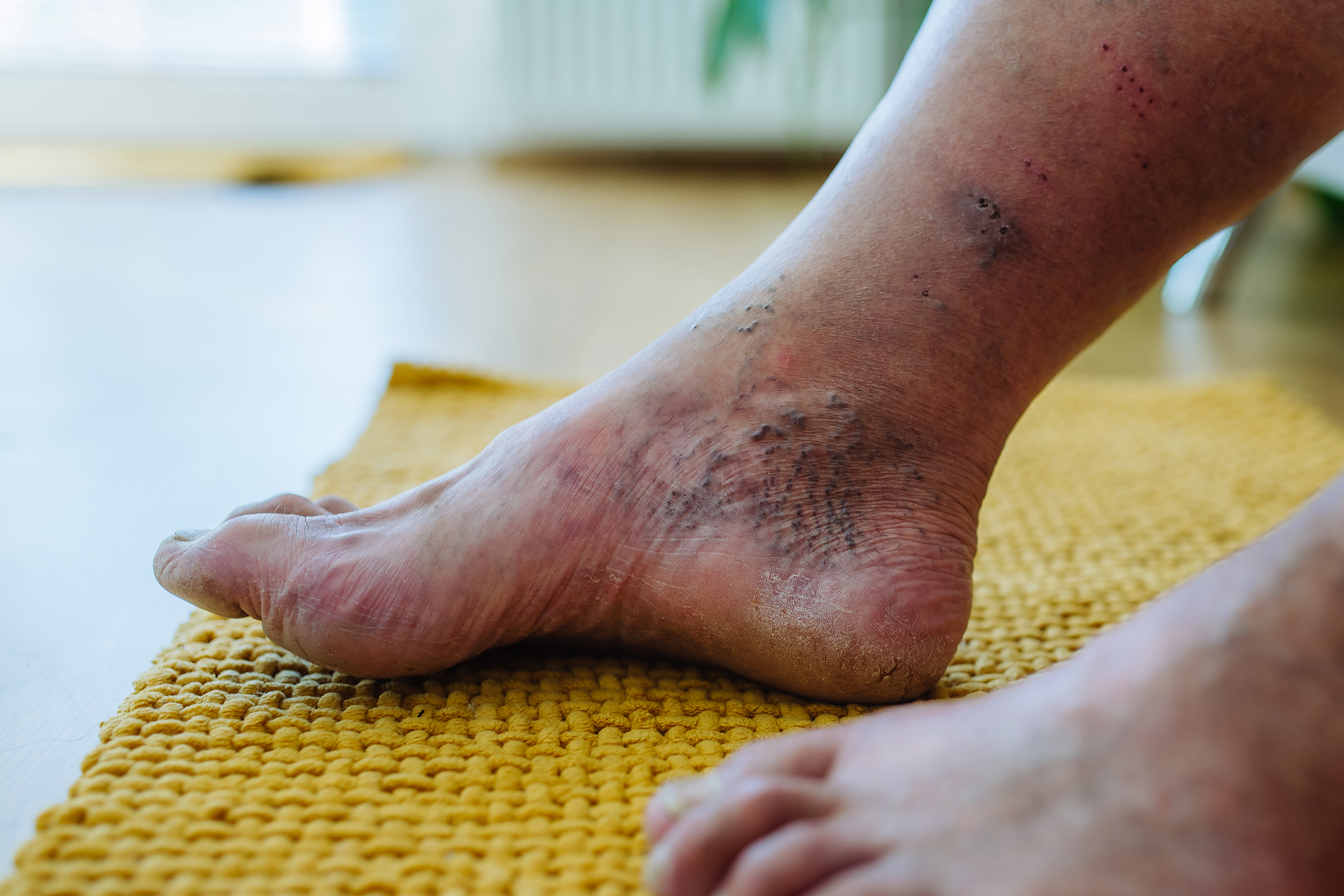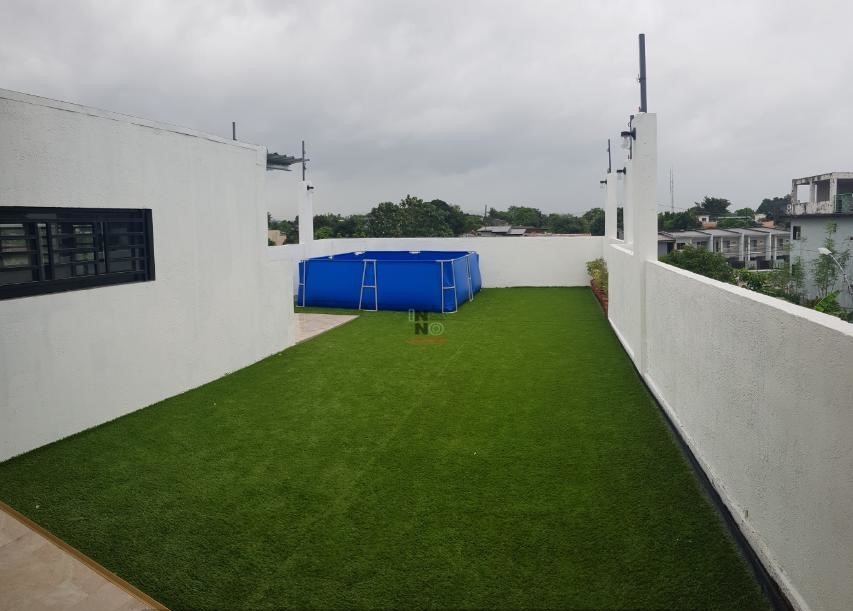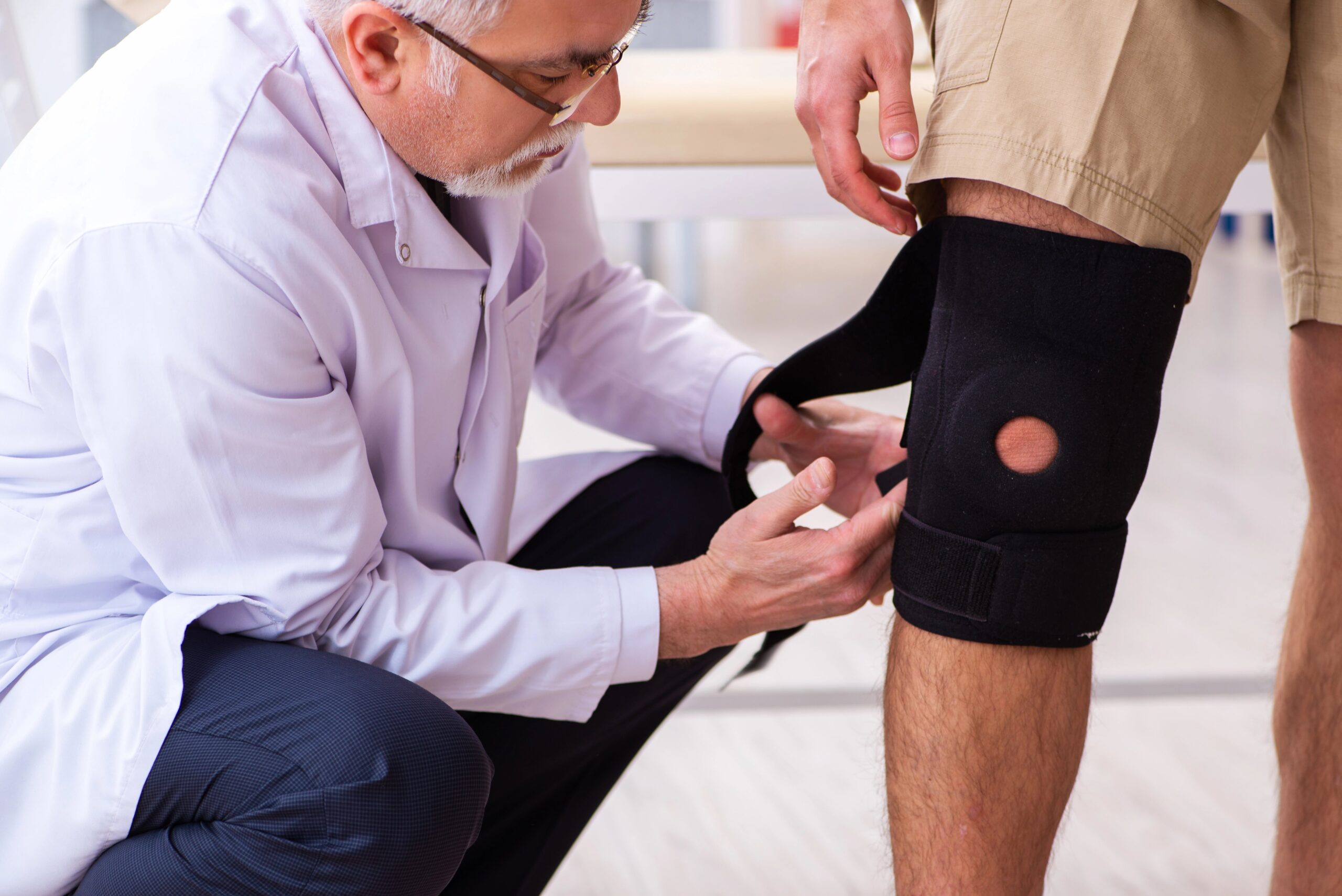Understanding Diabetic Foot Ulcers
Comprehensive diabetic foot ulcer management starts with a clear understanding of what these wounds are and why they form. A diabetic foot ulcer is an open sore that usually develops on the bottom of the foot due to prolonged pressure, reduced blood circulation, and nerve damage caused by diabetes. Because diabetes often weakens the body’s natural ability to fight infections, these ulcers can progress quickly if not addressed properly. Risk factors such as long-standing diabetes, poorly controlled blood sugar levels, smoking, and kidney disease increase the likelihood of ulcers forming. People who experience peripheral neuropathy may not feel small cuts or blisters, allowing wounds to worsen without notice. The combination of impaired sensation and slow healing makes diabetic foot ulcers particularly dangerous. By recognizing their nature and origins, patients and caregivers can better appreciate the importance of proactive care.
Warning Signs That Should Not Be Ignored
Recognizing early warning signs is a crucial part of comprehensive diabetic foot ulcer management. Redness, swelling, or warmth in a specific area of the foot may indicate infection. Blisters, sores, or small cuts that do not heal in a timely manner should raise concern. Changes in skin color, such as darkening or paleness, often signal poor circulation. Pus, foul odor, or increasing pain are signs that medical care is urgently required. Some individuals may also notice numbness or tingling due to neuropathy, making it difficult to detect worsening damage. Any sudden increase in foot temperature compared to the other foot should also be considered a red flag. Acting quickly when these signs appear greatly reduces the risk of severe complications.
Why Comprehensive Management Matters
The importance of comprehensive diabetic foot ulcer management lies in preventing serious and life-altering complications. Without proper treatment, ulcers can lead to deep infections, gangrene, and even amputation. A structured approach ensures wounds are managed with careful monitoring, timely interventions, and multidisciplinary care. Doctors, nurses, podiatrists, and diabetes educators often work together to provide the best possible outcomes. Beyond treating the wound itself, comprehensive care also focuses on controlling blood sugar and managing underlying conditions. This holistic approach reduces hospitalizations and long-term disability, improving quality of life. Patients who commit to consistent care and monitoring experience far fewer complications. The ultimate goal of comprehensive management is not only to heal ulcers but also to prevent them from returning.
Essential Diagnostic Approaches
Proper diagnosis is the foundation of effective diabetic wound care management. Healthcare providers begin with a physical examination, carefully checking for ulcers, infections, and circulation issues. Wound assessment involves evaluating depth, size, and the presence of dead tissue. Imaging tests, such as X-rays or MRI scans, may be ordered to detect bone infections or deep tissue damage. Blood tests are often performed to measure infection markers and monitor blood sugar levels. Vascular studies help assess circulation, while nerve function tests evaluate the extent of neuropathy. Accurate diagnosis ensures that treatment is tailored to the patient’s unique needs. This comprehensive approach allows providers to create a roadmap for healing and long-term care.
Core Principles of Treatment
The foundation of comprehensive diabetic foot ulcer management revolves around several proven treatment methods. Debridement, or the removal of dead and infected tissue, allows healthy tissue to regenerate and promotes faster healing. Controlling infection is equally important, with antibiotics prescribed as needed to stop bacteria from spreading. Proper wound dressings play a vital role in maintaining a moist environment that supports healing while protecting the ulcer from contaminants. Offloading, which reduces pressure on the wound, is often achieved with specialized footwear, braces, or total contact casts. Regular cleaning and dressing changes are required to prevent new infections from developing. Patients also benefit from monitoring their blood glucose closely, since high sugar levels can delay wound healing. Following these principles consistently helps reduce recovery time and lowers the risk of serious complications.
The Role of Advanced Therapies
For ulcers that do not heal with standard treatment, advanced therapies are an important part of comprehensive diabetic foot ulcer management. Hyperbaric oxygen therapy is one option, where patients breathe pure oxygen in a pressurized chamber to enhance healing by improving circulation and oxygen delivery to tissues. Growth factors and bioengineered skin substitutes are sometimes used to stimulate new tissue development. Negative pressure wound therapy, which involves applying suction to remove excess fluid and increase blood flow, has shown positive results for complex wounds. Some patients may also benefit from laser therapy or electrical stimulation to promote faster healing. These advanced treatments are usually recommended by specialists when traditional care does not achieve desired results. By combining conventional and advanced therapies, healthcare providers can give patients a higher chance of recovery.
Everyday Self-Care and Preventive Measures
Effective management does not stop at the clinic; patients play a central role in their own recovery. Daily foot inspection is vital, as it helps detect small cuts, blisters, or changes in skin before they worsen. Good hygiene, including gentle washing and careful drying of feet, reduces the risk of bacterial or fungal infections. Moisturizing prevents skin cracks, but creams should be avoided between the toes to prevent excess moisture. Choosing the right footwear is another key step, with shoes designed to minimize pressure and protect against injury. Blood sugar management remains one of the most powerful tools in promoting wound healing and preventing future ulcers. Patients who incorporate exercise and balanced nutrition into their routine improve circulation, which supports overall foot health. Self-care combined with medical guidance creates a powerful defense against recurring ulcers.
Building a Long-Term Care Plan
Sustaining foot health requires a structured, long-term care plan tailored to each individual’s needs. Regular visits to podiatrists and diabetes specialists ensure early detection of potential problems. Nutrition counseling helps patients make dietary choices that support stable blood sugar and promote wound healing. Exercise plans, when carefully chosen, improve circulation without causing additional foot stress. Family members and caregivers also play a significant role, providing support and assisting with daily inspections when necessary. Education about proper shoe choices, foot protection, and lifestyle adjustments empowers patients to take charge of their health. Some healthcare teams also provide access to community programs or support groups that reinforce positive habits. A well-designed long-term care plan ensures that diabetic foot health remains a priority throughout life.
Frequently Asked Questions (FAQ)
How long does it take for a diabetic foot ulcer to heal?
Healing time depends on the size, depth, and severity of the ulcer, as well as the patient’s blood sugar control. Minor ulcers may heal in a few weeks with proper care, while severe ones can take several months.
Can foot ulcers heal without medical treatment?
It is highly unlikely. Most ulcers require professional evaluation and treatment to avoid complications. Self-treatment without guidance often leads to infections and worsening wounds.
What kind of shoes are best for people with diabetic ulcers?
Special diabetic footwear or custom orthotics designed to reduce pressure points are ideal. Shoes should provide cushioning, proper fit, and protection against injuries.
Are there natural remedies that can support healing?
Some natural approaches, such as proper nutrition, maintaining hydration, and using mild antiseptic washes, can support healing. However, they should never replace professional medical treatment.
When should someone go to the hospital for a foot ulcer?
Immediate medical attention is required if there is spreading redness, swelling, severe pain, foul odor, or fever. These symptoms may indicate a serious infection that requires urgent care.











